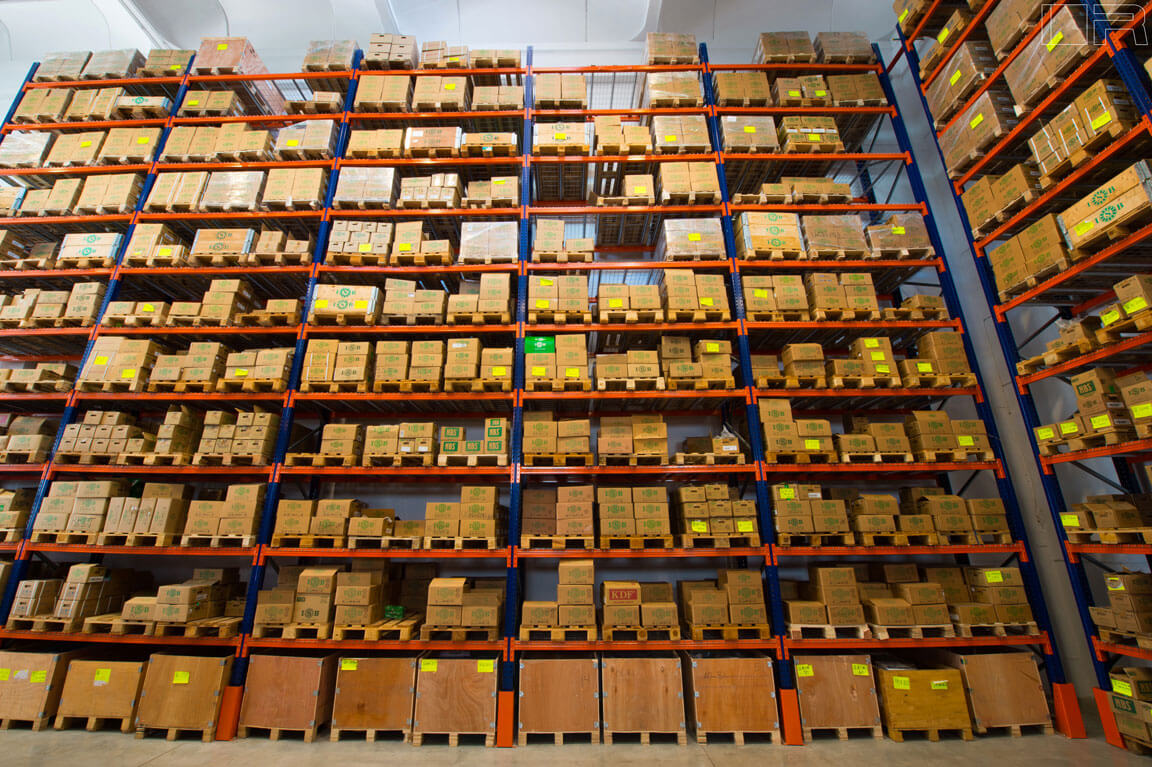What type of companies use conventional pallet racking?
Conventional pallet racking, also known as selective rack, is the most commonly used storage system. Countless companies use this solution, especially general warehouses.
It is suitable for large palletised loads, whether references are similar or not, as the shelves can be adapted to any type of product. The conventional pallet racking system is perfect for warehouses with high goods movement and rotation and it adapts to almost any requirement.
What is the conventional pallet racking system?
It is made up of single or double lines of shelves comprising racks and bars arranged to form corridors. The pallets containing the goods are placed on the bars.
– Single lines: usually installed on the walls of the enclosure with access to only one side of the shelf.
– Double lines: located in the middle of the warehouse; they are made up of two single linear structures, with access on both sides of the shelves. Double lines can be joined together to double their depth and increase storage capacity.
The corridors resulting from the distribution of the lines must have the appropriate dimensions and specifications for the traffic and manoeuvring of mechanical maintenance equipment, usually forklifts.
Why use the conventional pallet racking system?
– It optimises the surface area and height available in the warehouse.
– It is versatile and adapts to the physical size and specifications of the products.
– The fast location and direct access to each load unit affords good control of the references stored and optimal stock management.
– Assembly is easy and the replacement of the different parts is simple and quick.
The lower levels of the storage system can also be combined with a picking system or manual management. The higher levels are normally used for palletised goods, such as safety stock, and the lower levels are reserved for references processed by manual picking that are accessed more frequently.
This makes it a very practical system that adapts to different logistic operations thanks to the optional configurations and range of accessories.
Our technical department can help you get the most out of the space you have available and achieve optimal warehouse performance. If you need technical advice, please do not hesitate to contact us.

